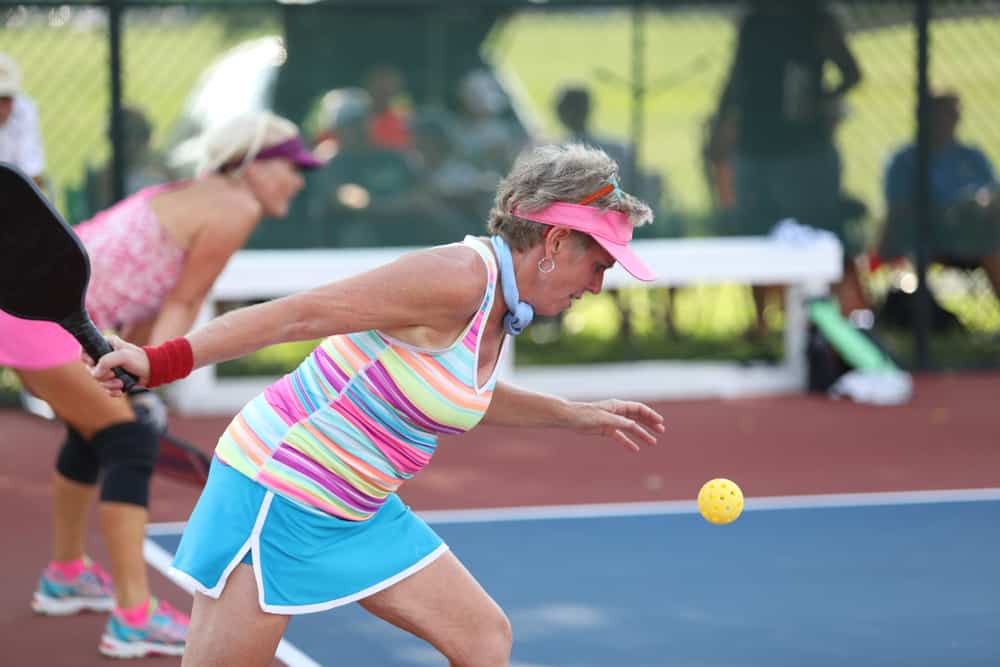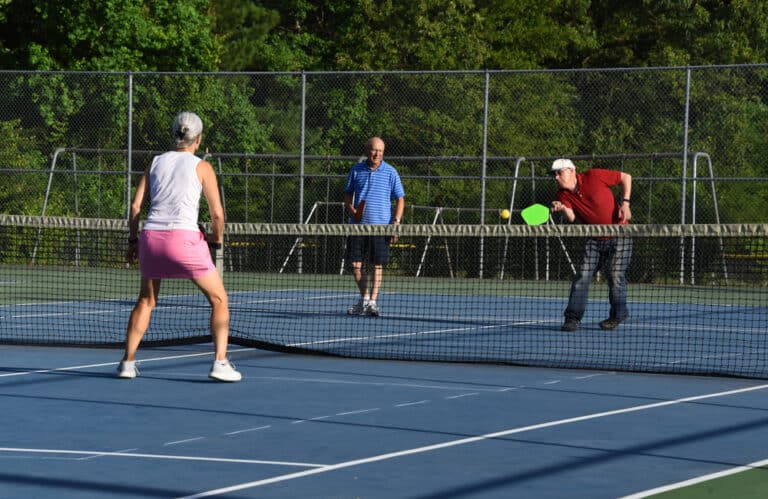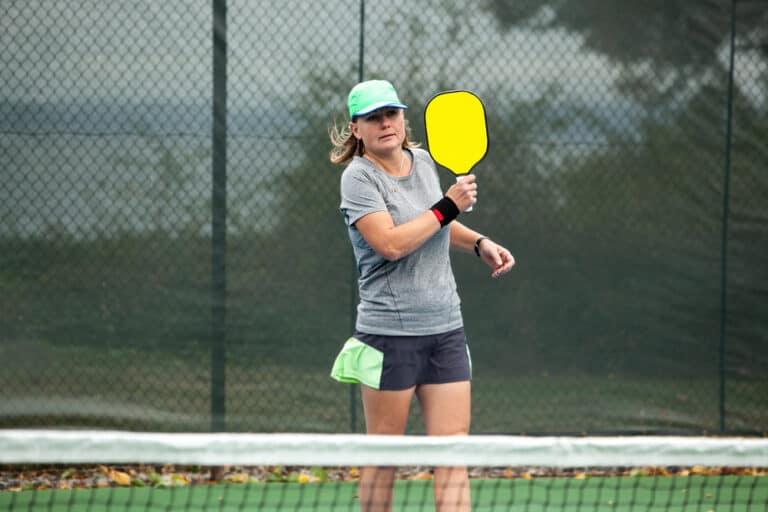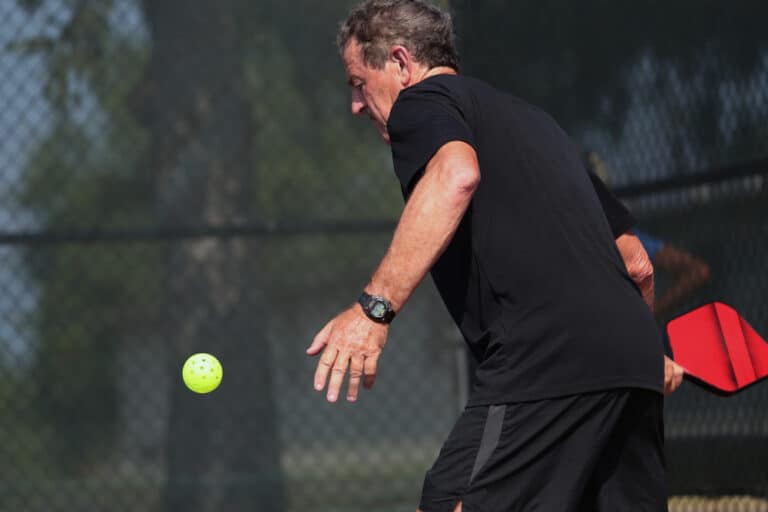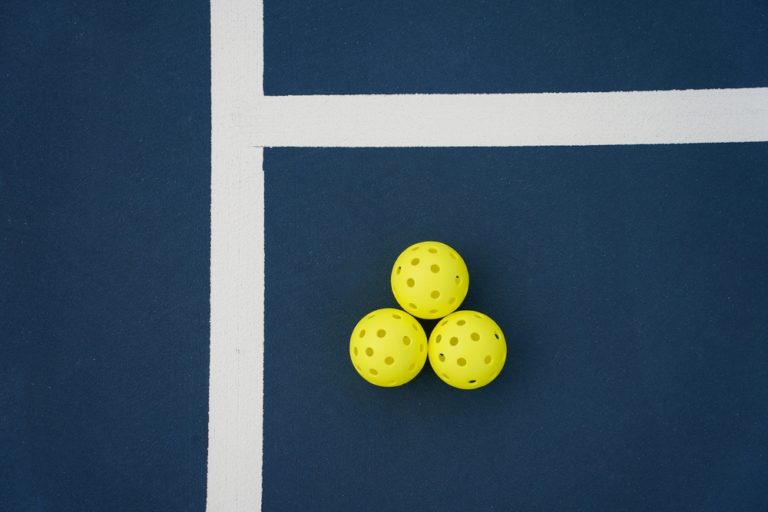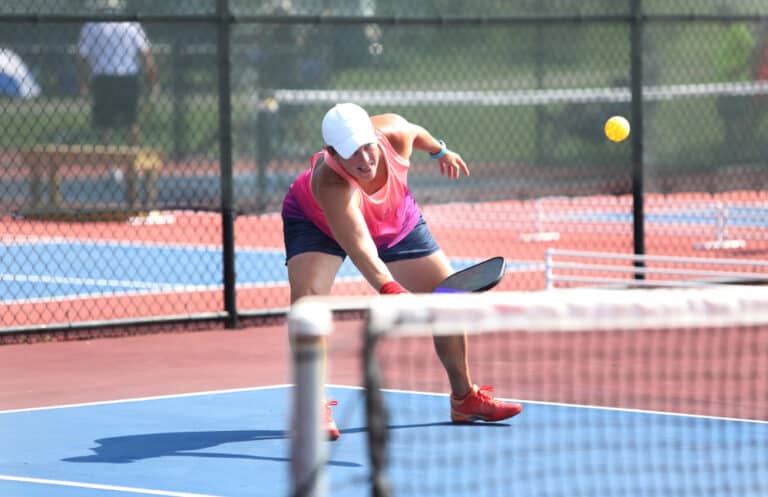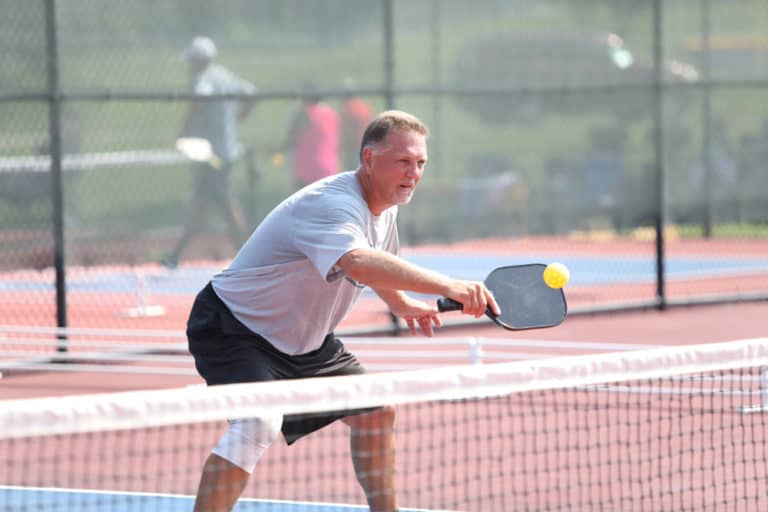Can You Bounce The Ball Before You Serve In Pickleball?
Whether you are a new or a longtime Pickle Baller, there are some confirmed rule changes for the 2022 season. As expected, the service is one area where rule changes were bound to happen. Since last year, the serve has been a hot topic, and some players might wonder if you can bounce the ball before you serve in pickleball 2022.
In pickleball, a player may bounce the ball before serving (drop serve). The ball must be released from the server’s hand or dropped from the paddle face, from any un-aided height, before being hit by the server. The number of times the ball can bounce before the server hits it is unrestricted.
During the 2021 pickleball season, a provisional law was put in place where a server could bounce the ball before serving. The rule change came about to ensure that beginners had an additional and easier way of learning how to serve in pickleball, as the traditional way was difficult to master at first.
Is It Legal To Bounce The Ball Before You Serve In Pickleball?
Bouncing the ball before serving in pickleball was introduced under an interim rule during the 2021 season.
Players who found this new way of serving helpful will be delighted to read Rule 4.A.6.a. (Published in the official rule book published by the USA Pickleball Association (USA Pickleball) & The International Federation Of Pickleball (IFP) for 2022.)
Rule 4.A.6.a As Confirmed By USA Pickleball
The provisional rule of 2021 regarding the ball’s bouncing before you serve, known as the drop-serve, was officially cemented as a set-in-stone pickleball rule for 2022 and onwards.
The rule states (page 25 & 26) the following regarding the dropping of the ball and hitting a serve after the bounce:
- Servers must release the pickleball from one hand from any natural height without bouncing it with force off the court or tossing the ball up. The server needs to hit the ball after it bounces.
- The server may also let the ball drop off the paddle’s surface from any natural height.
- It must be visible to both the referee and the receiver when releasing the ball.
- In matches played without a referee, the ball’s release must be visible to the receiver.
- If the ball is not visible to the receiver, referee, or one of the parties, the service will be replayed.
- The ball is allowed to bounce as many times as the server chooses to let it bounce before hitting it.
- The server must hit the ball within 10 seconds after the score is called.
- The service ball may bounce anywhere on the playing surface.
- The service shot may be struck using the forehand or the backhand.
- There is no restriction regarding how high your paddle may be when striking the ball.
- You are allowed to strike the ball with a high to low motion.
- The serve placement and feet placement rules, 4.A.2 and 4.A.4, still apply to the drop serve.
Watch a drop serve tutorial below.
The Advantages Of The Drop Serve
Any rule change in sport is made with careful consideration to its possible effects on said game. If it changes too much of the sport’s fundamentals, a rule change will not become official.
After seeing out the provisional period in 2021, the following advantages were noted with regards to the drop serve:
Easy Service Method For Beginners
The drop serves being integrated into pickleball resulted in a more effective way for beginners to learn to serve in pickleball and start playing with some confidence.
Let’s be honest. Not everyone could perform the traditional volley serve, as it requires a higher level of hand-eye coordination. Some players were left discouraged when they could not perfect a serve in a game where serving is important.
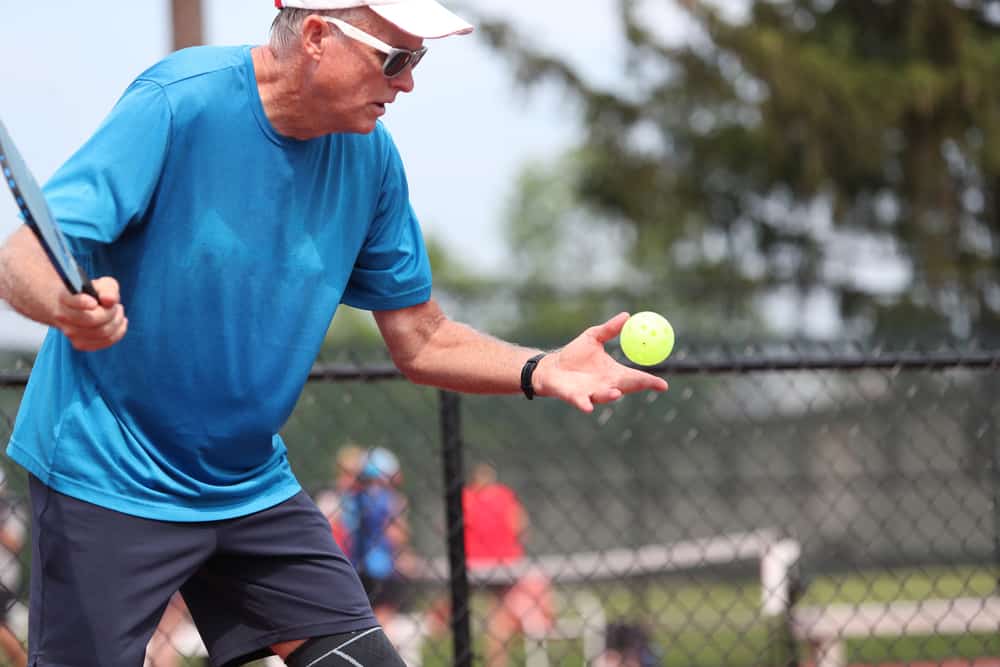
More Attacking Serving Options
For regular and more experienced players, it opened up a new world of serving, where they could add some extra weapons to their serving arsenal, like the following:
- More Spin On The Serve
- Pure Slice On The Serve
- Heavy Sidespin On The Serve
- A More Offensive Serve
By hitting with a downward motion, applying more slice to the ball allows the ball to skip off the surface at a low angle.
The receiver is forced to make contact at a lower angle than usual, forcing them to hit the ball upwards, which takes away the offensive elements of a normal return shot.
With a bouncing ball, it’s easier to apply more sidespin on the ball, probably due to the downward slicing motion, and it’s a great offensive option that servers can practice and use legally in 2022.
The bounce allows for an easier backhand serve, as hitting a backhand serve directly out of the air can be awkward and somewhat difficult. Players can now focus on hitting a backhand slice, topspin backhand, or even a double-handed backhand drive as serving options.
Serving is about to play a more critical role in 2022 and onwards as players will begin to master driving, slice, and side spinning the pickleball when using a drop serve.
Innovative rule changes ensure that a sport doesn’t stagnate. The added serving option will attract more players to pickleball, in my opinion.
What Other Service Rules Changed In 2022?
The other big change was to declare the “Chainsaw” serve illegal. One of Zane Navratil’s favorite shots is now illegal in 2022.
Rule 4.A.5 – USA Pickleball states the following:
“4.A.5. The Volley Serve. The server shall use only one hand to release the ball to perform the serve. If the ball is visibly spun by the server during the release, the part(s) of the hand contacting the ball must be bare. The server’s release of the ball must be visible to the referee and the receiver. In matches without a referee, the server’s release of the ball must be visible to the receiver. A replay shall be called before the return of serve if the release of the ball is not visible or if the referee (or receiver in non-officiated matches) cannot discern whether an item on the hand contacted a visibly spun ball. Exception: A player who has the use of only one hand may use their hand or paddle to release the ball to perform the serve.”
Conclusion
You can let the ball bounce before you serve in pickleball. The number of bounces allowed will be governed by a 10-second time frame from when the full score was called. You are allowed to serve with a front hand or backhand motion.
Putting spin or sidespin on the ball is allowed, and you may serve the ball using a downward motion. There are no rules for how high your paddle needs to be or the maximum angle of impact, just as long as you don’t use downward force or upward force when releasing the ball to serve.

